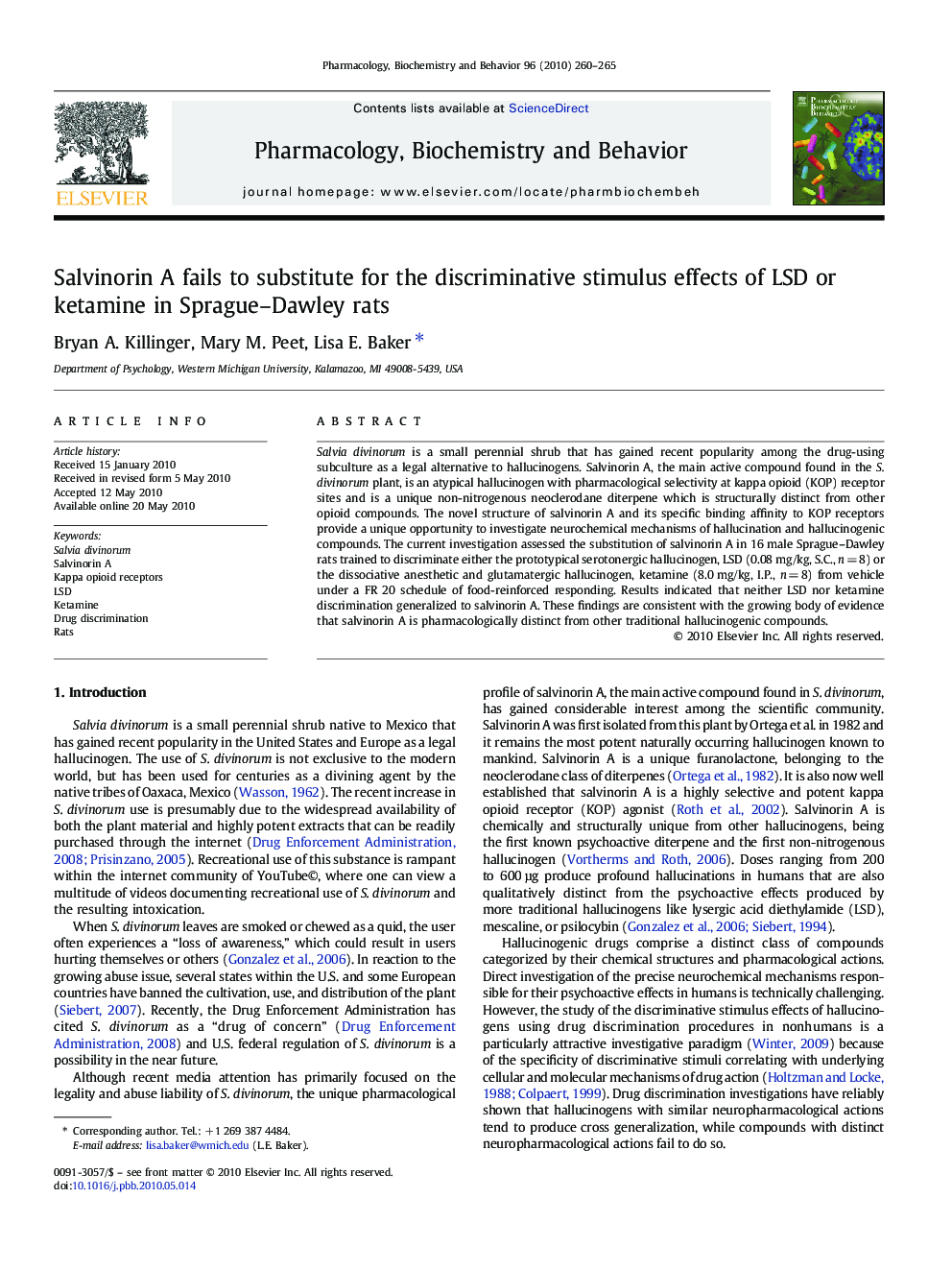| Article ID | Journal | Published Year | Pages | File Type |
|---|---|---|---|---|
| 2013282 | Pharmacology Biochemistry and Behavior | 2010 | 6 Pages |
Abstract
Salvia divinorum is a small perennial shrub that has gained recent popularity among the drug-using subculture as a legal alternative to hallucinogens. Salvinorin A, the main active compound found in the S.divinorum plant, is an atypical hallucinogen with pharmacological selectivity at kappa opioid (KOP) receptor sites and is a unique non-nitrogenous neoclerodane diterpene which is structurally distinct from other opioid compounds. The novel structure of salvinorin A and its specific binding affinity to KOP receptors provide a unique opportunity to investigate neurochemical mechanisms of hallucination and hallucinogenic compounds. The current investigation assessed the substitution of salvinorin A in 16 male Sprague-Dawley rats trained to discriminate either the prototypical serotonergic hallucinogen, LSD (0.08 mg/kg, S.C., n = 8) or the dissociative anesthetic and glutamatergic hallucinogen, ketamine (8.0 mg/kg, I.P., n = 8) from vehicle under a FR 20 schedule of food-reinforced responding. Results indicated that neither LSD nor ketamine discrimination generalized to salvinorin A. These findings are consistent with the growing body of evidence that salvinorin A is pharmacologically distinct from other traditional hallucinogenic compounds.
Related Topics
Life Sciences
Biochemistry, Genetics and Molecular Biology
Biochemistry
Authors
Bryan A. Killinger, Mary M. Peet, Lisa E. Baker,
